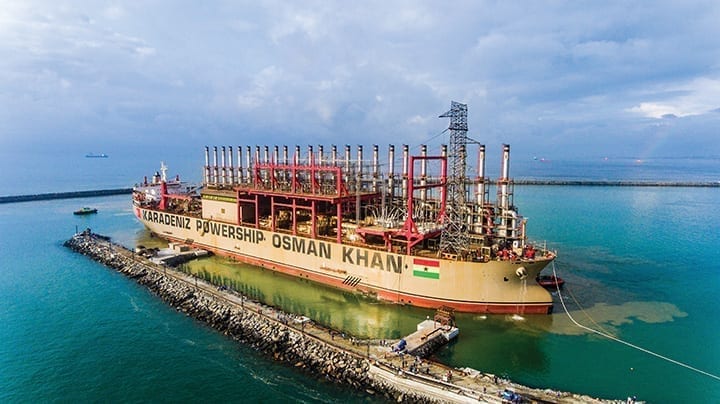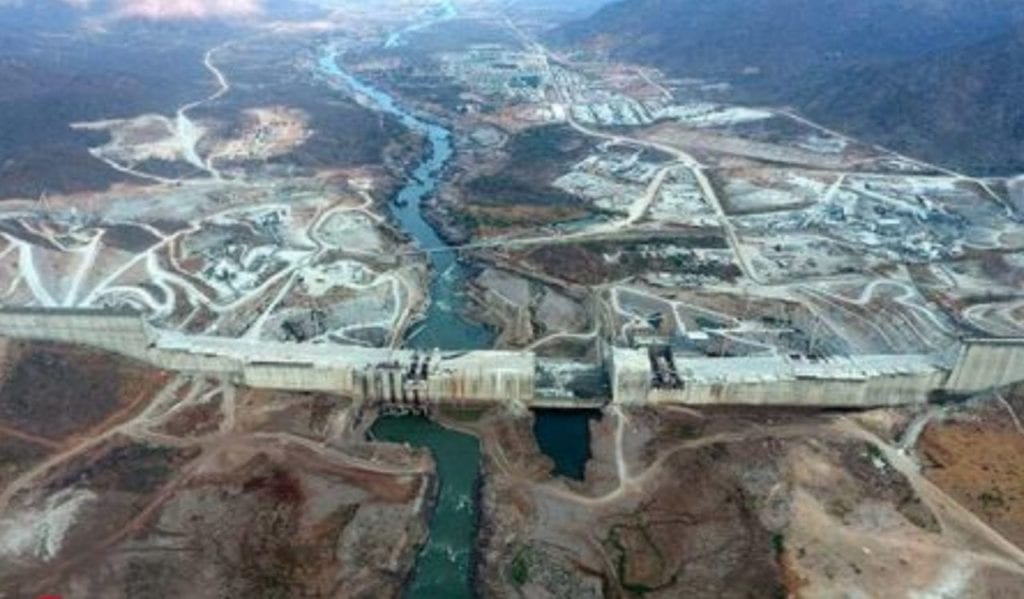Gas-to-Power Emerging as Central to Africa’s Economic, Industrial Future
The post Gas-to-Power Emerging as Central to Africa's Economic, Industrial Future appeared first on POWER Magazine.

The energy industry in Africa is staging a comeback after the pandemic's significant economic impact over 2020. In 2021 and beyond, according to the Africa Energy Chamber (AEC), the revival will focus heavily on gas for power.
While much progress has been achieved in the region's vast and diverse power space, Africa's power sector continues to be limited by sparse interconnection and trade, and system adequacy issues. According to the International Energy Agency's recent World Energy Outlook 2020, of the 54 countries in Africa, only 10 have unbundled utilities with either an independent transmission system operator or a legally unbundled transmission system, while 29 of the 54 today allow private sector participation. About 580 million people in Africa still lacked access to power in 2019-making up 75% of the global total.
Despite relatively low case fatality rates related to COVID-19, the region in 2020 suffered a 3% contraction in gross domestic product. The economic downturn strained government and utility finances, and left an estimated 6% in sub-Saharan Africa with electricity access unable to afford basic electricity services.
However, the region still marked milestones for some major projects in 2020. In a much-watched development, the Grand Ethiopian Renaissance Dam (Figure 1) saw its first filling following the completion of the lower section of the dam, and Ethiopia-despite a face-off with its neighbors Egypt and Sudan-expects that the first two turbines at the 6.4-GW hydropower plant may be commissioned toward the end of 2021. The project is envisioned as a major regional interconnection hub within the East African Power Pool, and it includes plans to complete a 2,000-MW, 1,055-kilometer bipolar high-voltage direct-current (HVDC) line between Ethiopia and Kenya by early 2021.
 1. The 6.4-GW Grand Ethiopian Renaissance Dam is located approximately 500 kilometers northwest of Ethiopia's capital Addis Ababa, in the region of Benishangul-Gumaz along the Blue Nile. The project is embroiled in an international dispute over water use from the river. Courtesy: WeBuild
1. The 6.4-GW Grand Ethiopian Renaissance Dam is located approximately 500 kilometers northwest of Ethiopia's capital Addis Ababa, in the region of Benishangul-Gumaz along the Blue Nile. The project is embroiled in an international dispute over water use from the river. Courtesy: WeBuildInvestment also ticked upward in renewables projects, including for wind, solar, hydro, and geothermal projects across the continent. Mozambique, for example, launched a renewable auction program for 120 MW of wind and solar projects; Togo launched a tender for 80 MW of solar PV; and Tunisia awarded a 100-MW solar project and launched a tender for another 70 MW as part of a program that has already secured 500 MW of solar.
But in South Africa, as of October, state-owned vertically integrated utility Eskom suffered a total of 1,240 GWh of load-shedding, despite attempts to address its capacity constraints through an ambitious plan to procure 11.8 GW. In an economic reconstruction and recovery plan issued in October, South Africa's government described specific interventions in the energy sector, including creation of a new transmission company from restructuring Eskom, and unlocking 2 GW in firm capacity and up to 6.8 GW of renewables and battery storage. The government also called for a nuclear program at a pace and rate that is affordable," as well as a liquefied natural gas (LNG) import architecture.
Gas Prominent in Africa's Power FutureIn its November-launched African Energy Outlook 2021, the region's energy trade group AEC provided a more optimistic outlook. Power generation on the continent will increase by 25%, 55%, and 141% of 2020 baseline levels to reach 1,057 TWh, 1,138 TWh, and 2,047 TWh by 2025, 2035, and 2040, respectively, it suggested. The bulk of this new supply will be natural gas-fired or LNG-fueled, the AEC said, though it also described modest growth in shares of renewables and decentralized off-grid power. It also said, pointedly, that Africa's energy transition will likely emphasize energy security (access) and energy poverty (affordability)," and that climate change considerations must consider the economic challenges that Africans face.
Curbing emissions is a noble and essential goal. The problems associated with climate change aren't something we can look on from afar and let someone else worry about. After all, Africa is considered more vulnerable to the effects of climate change than many other areas, especially since so much of the population depends on regular rainfall to grow food crops," said NJ Ayuk, AEC executive chairman, in December. We also understand that it's our responsibility as global citizens to participate in energy transition. Within reason, that is."
He added: Energy transition, the so-called path from fossil-based to zero carbon, cannot be applied with a broad brush. What will work in Norway isn't always feasible in Namibia. What makes for sensible policy in London isn't necessarily pragmatic in Lagos."
A key reason that the region is so heavily focused on gas-to-power is that its gas industry holds enormous potential," the report says. The continent was estimated to have between 527-558 trillion cubic feet (Tcf) of gas as at the end of 2019, making Africa the fourth-largest gas reserves holder in the world after North America (7.5 percent of proven global reserves), according to BP and OPEC statistics. Over 90% of all recent gas discoveries in Africa were made by nascent players like Mozambique, Tanzania, Mauritania and Senegal. The Chamber believes that these changes highlight a potential new age for gas supply diversification in Africa as several new producers come on board."
Gas power, notably, already makes up 39%-the largest share-of Africa's supply mix, followed by coal (29%), hydro (15%), oil (10%), and nuclear (2%)-from a single plant. Renewables hold a growing 5% share, but most existing projects are centered in Morocco, Egypt, South Africa, and Kenya. Another reason the region is banking on gas is that in 2019, the industrial sector led sectoral consumption (41%), followed by residential (33%), commercial and public services (18%), and agriculture (4%). The report notes off-grid power could resolve some of that growing demand, particularly in the residential and agricultural sectors. Off-grid projects-through stand-alone systems and mini-grids-could provide almost 50% of the new electricity access, as this represents the least cost solution to connect about 450 million people on the continent (41% of the population) toward 2030, it says.

Karpowership's 470-MW floating power plant deployed at two locations in Ghana won a POWER Top Plant award in 2020 for demonstrating how robust an impact the innovative plug-and-play" electricity delivery model can have on a power-hungry country's economy and society. Courtesy: Karpowership
But to address larger power needs in the near-term, the AEC envisions a gas power build-out that would be supported by an expanded pipeline network in West, East, and Southern Africa. It suggests that regional gas movements could more than double by 2030. Notably, of all gas produced in Africa in 2019, 40% (about 3.6 Tcf) was exported, while the remainder was domestically consumed for power production, mostly in Algeria, Egypt, Nigeria, and South Africa.
Navigating Multiple ChallengesThe main challenge for Africa in the next decade is its ability to increase gas supply as the primary fuel in electricity generation to increase electricity access and productive economic uses of electricity. Ensuring the reliability of power supply and reducing electricity generation costs depends mainly on Africa's ability to navigate infrastructure and affordability challenges," the report says.
Part of this effort will require regulatory reforms. While 34 countries had established independent energy sector regulators, many lacked supportive regulatory frameworks that were constrained by legal and institutional gaps, including a low regulatory capacity," it said. Key threats to regulatory reform include the unpredictability of tariffs and non-reflective end-user tariffs in the overall transmission investment portfolio, as well as poor governance, pressure from labor unions, and macroeconomic issues. The report also cites lack of access to funding, such as concessional loans; political instability; and factors that have delayed infrastructure development, as well as development of regional markets, regional regulators, power pools, and member country cooperation.
Efforts to improve regional cooperation are underway, however. Starting in January 2021, continental trade aimed at boosting Africa's trading position under a common voice" will begin under the African Continental Free Trade Area (AfCFTA) agreement. The AEC is optimistic that the initiative could spur continental power trade.
The interconnections linking the South African Power Pool (SAPP), West Africa Power Pool (WAPP), and Eastern African Power Pool (SAPP) provide numerable opportunity to establish the expected the African Single Electricity Market (AfSEM)," the report says. Along with cross-border power trade, the prospect may also open up financing opportunities, for example, to introduce public-private partnerships in financing cross-country and cross-regional transmission networks. These models, though new in Africa, could significantly contribute to the faster development of power markets and give opportunities to the private sector to participate in the otherwise monopoly subsector," it says.
Those prospects are growing especially important because many international banks have retreated from financing the development of oil and gas as part of an aggressive decarbonization push. But the risks are larger for Africa if it does not develop its hydrocarbon resources, especially for less diversified, commodity dependent economies, which may see a strain on government revenues, the AEC said.
-Sonal Patel is a POWER senior associate editor (@sonalcpatel, @POWERmagazine).
The post Gas-to-Power Emerging as Central to Africa's Economic, Industrial Future appeared first on POWER Magazine.